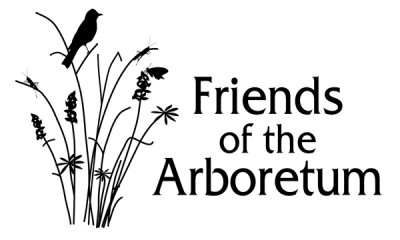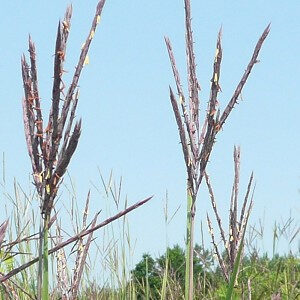COMMON NAME: Big bluestem, turkey foot
SCIENTIFIC NAME: Andropogon gerardii – This name honors a French physician and botanist, Louis Gerard (1733-1819). Andros comes from the Greek for “man” and pogon means “beard.”
FLOWER: Delicate, purplish, not showy. The flower heads form a distinctive three-part “turkey foot.”
BLOOMING PERIOD: Late July to early September
SIZE: Five to nine feet, depending on soil type.
BEHAVIOR: This is a vigorous plant that can form large clumps. It is highly flammable.
SITE REQUIREMENTS: One of the most widely adapted prairie species as far as soil type and moisture levels are concerned. It occurs in all but the wettest prairies, including very dry sites where it may reach only two to three feet in height. It does not tolerate shade.
NATURAL RANGE: Much of southern Canada, most of the U.S. east of the Rockies, and extending into northern Mexico. It occurs throughout Wisconsin, but is more common in the south and west parts of the state.
SPECIAL FEATURES: Its vertical form and height makes big bluestem the essence of the prairie esthetic. Green stems have rich coloring with blue and red hues in summer and turn delicate gold and pink shades in fall. The tall flower stalks catch the prairie breezes from late summer through winter.
SUGGESTED CARE: Needs little attention after initial planting. Be careful about location in a small prairie garden because it tends to flop over unless it is in the midst of several other plants. Create an island in a small garden or plant at the back of a prairie border.
COMPANION PLANTS: Leadplant, little bluestem, smooth aster, coreopsis, shooting star, rattlesnake master, showy sunflower, rough blazingstar, compass plant, prairie dropseed. If the site is moist, it pairs well with New England aster, bluejoint grass, mountain mint and cordgrass.

